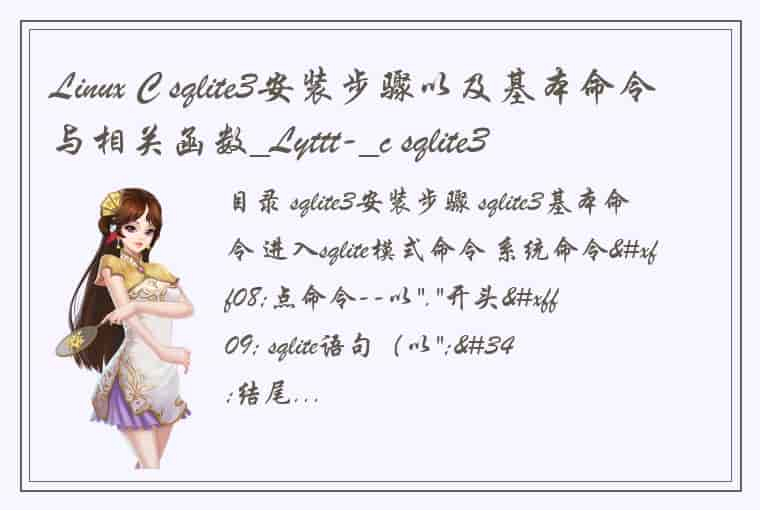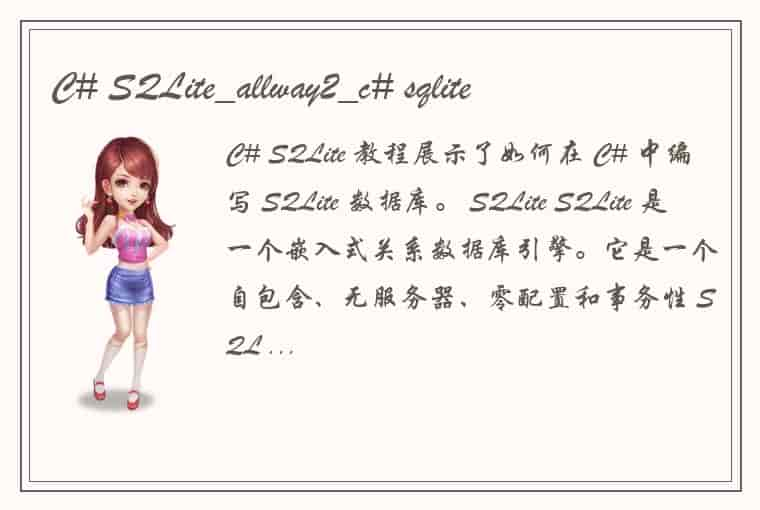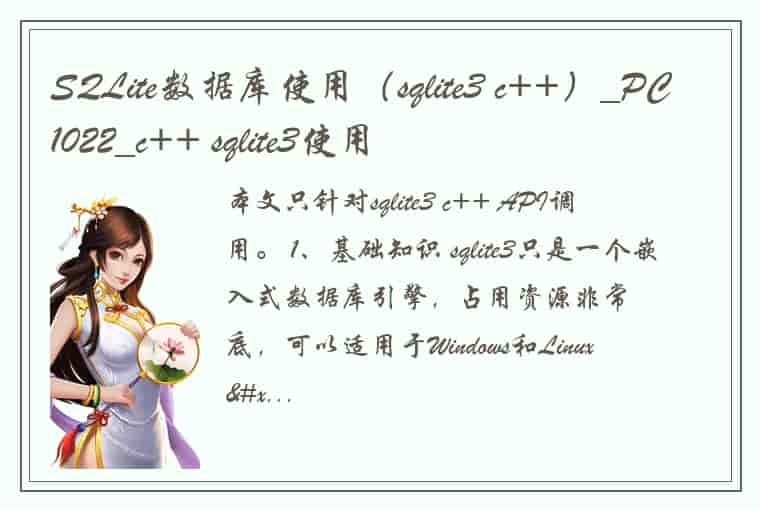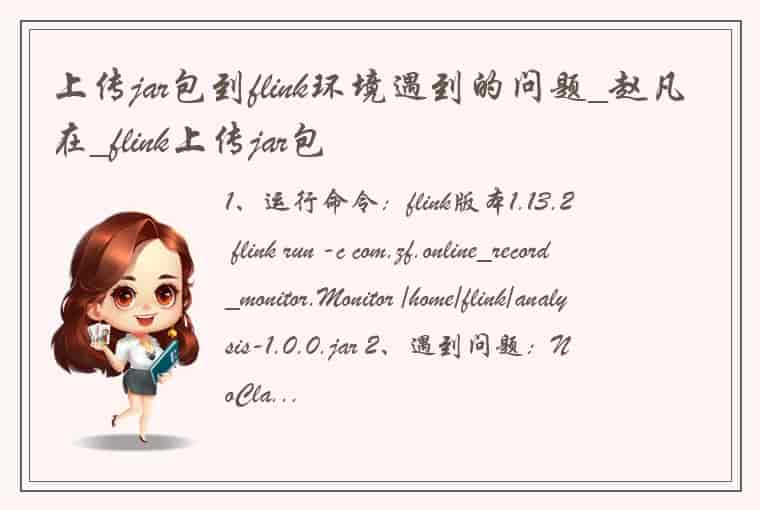一、cJSON介绍
? ? ? cJSON 是一个超轻巧,携带方便,单文件,可以作为 ANSI-C 标准的 JSON 解析器,是一个用C语言编写的简单好用的JSON解析器;它只包含一个C文件和一个头文件,可以非常容易集成到自己工程项目中。
? ? ? ? 并且cJSON是用ANSI C(C89)编写的,可以兼容所有支持C语言的平台和编译器。
? ? ? ? cJSON下载地址:??cJSON download | SourceForge.nethttps://sourceforge.net/projects/cjson/
? ? ? ?cJSON的GitHub仓库地址:https://github.com/DaveGamble/cJSONhttps://github.com/DaveGamble/cJSON
二、JSON简介、语法介绍? 2.1 JSON是什么??? ? JSON是JavaScript Object Notation(JavaScript对象表示法),是一种轻量级的数据交换格式。? ? ?
? ? JSON主要是用来存储和交换文本信息,类似XML格式;但是JSON比XML更小、更快,更易解析。
? ? JSON是基于ECMAScript (欧洲计算机协会制定的js规范)的一个子集,采用完全独立于编程语言的文本格式来存储和表示数据。
? ? ? ?简洁和清晰的层次结构使得 JSON 成为理想的数据交换语言。 易于人阅读和编写,同时也易于机器解析和生成,并有效地提升网络传输效率。 比如: Web服务器接口基本都是采用JSON反馈数据,采用JSON格式字符串来描述符信息。 JSON文件的后缀一般是.json,这个只是为了方便辨识。
? ?简单的说,JSON就是按照指定格式序列化的字符串,就算不使用任何现成的解析库,自己也可以按照正常解析字符串的思路去解析;有现成的标准JSON解析库,那就大大减轻了我们的工作量。? ?
? ?JSON格式的数据示例:? 这是表示当前时间的JSON字符串
{ "success": "1", "result": { "timestamp": "1631849514", "datetime_1": "2021-09-17 20:31:54", "datetime_2": "2021年09月17日 20时31分54秒", "week_1": "5", "week_2": "星期五", "week_3": "周五", "week_4": "Friday" } }???JSON格式的数据示例:? 这是表示未来几天天气预报的json字符串
{ "success": "1", "result": [ { "weaid": "1", "days": "2021-09-17", "week": "星期五", "cityno": "beijing", "citynm": "北京", "cityid": "101010100", "temperature": "26℃/17℃", "humidity": "0%/0%", "weather": "晴", "weather_icon": "http://api.k780.com/upload/weather/d/0.gif", "weather_icon1": "http://api.k780.com/upload/weather/n/0.gif", "wind": "北风转西南风", "winp": "小于3级", "temp_high": "26", "temp_low": "17", "humi_high": "0", "humi_low": "0", "weatid": "1", "weatid1": "1", "windid": "8", "winpid": "0", "weather_iconid": "0", "weather_iconid1": "0" }, { "weaid": "1", "days": "2021-09-18", "week": "星期六", "cityno": "beijing", "citynm": "北京", "cityid": "101010100", "temperature": "25℃/17℃", "humidity": "0%/0%", "weather": "多云", "weather_icon": "http://api.k780.com/upload/weather/d/1.gif", "weather_icon1": "http://api.k780.com/upload/weather/n/1.gif", "wind": "西南风", "winp": "小于3级", "temp_high": "25", "temp_low": "17", "humi_high": "0", "humi_low": "0", "weatid": "2", "weatid1": "2", "windid": "5", "winpid": "0", "weather_iconid": "1", "weather_iconid1": "1" }, { "weaid": "1", "days": "2021-09-19", "week": "星期日", "cityno": "beijing", "citynm": "北京", "cityid": "101010100", "temperature": "19℃/15℃", "humidity": "0%/0%", "weather": "小雨转中雨", "weather_icon": "http://api.k780.com/upload/weather/d/7.gif", "weather_icon1": "http://api.k780.com/upload/weather/n/8.gif", "wind": "西南风转北风", "winp": "小于3级转小于3级", "temp_high": "19", "temp_low": "15", "humi_high": "0", "humi_low": "0", "weatid": "8", "weatid1": "9", "windid": "5", "winpid": "0", "weather_iconid": "7", "weather_iconid1": "8" }, { "weaid": "1", "days": "2021-09-20", "week": "星期一", "cityno": "beijing", "citynm": "北京", "cityid": "101010100", "temperature": "26℃/16℃", "humidity": "0%/0%", "weather": "多云转晴", "weather_icon": "http://api.k780.com/upload/weather/d/1.gif", "weather_icon1": "http://api.k780.com/upload/weather/n/0.gif", "wind": "北风", "winp": "3-4级转3-4级", "temp_high": "26", "temp_low": "16", "humi_high": "0", "humi_low": "0", "weatid": "2", "weatid1": "1", "windid": "8", "winpid": "1", "weather_iconid": "1", "weather_iconid1": "0" }, { "weaid": "1", "days": "2021-09-21", "week": "星期二", "cityno": "beijing", "citynm": "北京", "cityid": "101010100", "temperature": "27℃/16℃", "humidity": "0%/0%", "weather": "晴", "weather_icon": "http://api.k780.com/upload/weather/d/0.gif", "weather_icon1": "http://api.k780.com/upload/weather/n/0.gif", "wind": "西北风转北风", "winp": "小于3级", "temp_high": "27", "temp_low": "16", "humi_high": "0", "humi_low": "0", "weatid": "1", "weatid1": "1", "windid": "7", "winpid": "0", "weather_iconid": "0", "weather_iconid1": "0" }, { "weaid": "1", "days": "2021-09-22", "week": "星期三", "cityno": "beijing", "citynm": "北京", "cityid": "101010100", "temperature": "26℃/18℃", "humidity": "0%/0%", "weather": "多云", "weather_icon": "http://api.k780.com/upload/weather/d/1.gif", "weather_icon1": "http://api.k780.com/upload/weather/n/1.gif", "wind": "北风转东北风", "winp": "小于3级", "temp_high": "26", "temp_low": "18", "humi_high": "0", "humi_low": "0", "weatid": "2", "weatid1": "2", "windid": "8", "winpid": "0", "weather_iconid": "1", "weather_iconid1": "1" }, { "weaid": "1", "days": "2021-09-23", "week": "星期四", "cityno": "beijing", "citynm": "北京", "cityid": "101010100", "temperature": "24℃/16℃", "humidity": "0%/0%", "weather": "多云", "weather_icon": "http://api.k780.com/upload/weather/d/1.gif", "weather_icon1": "http://api.k780.com/upload/weather/n/1.gif", "wind": "东北风", "winp": "小于3级", "temp_high": "24", "temp_low": "16", "humi_high": "0", "humi_low": "0", "weatid": "2", "weatid1": "2", "windid": "1", "winpid": "0", "weather_iconid": "1", "weather_iconid1": "1" } ] } 2.2? JSON语法介绍JSON里就分为两种结构:? 对象和数组,通过这两种结构可以表示各种复杂的结构。
JSON语法规则 1. 大括号 { } 用来保存对象 2. 中括号 [ ] 用来保存数组,数组里也可以包含多个对象,对象里又可以包含数组,可以嵌套 3. JSON的值表示语法: ?key : value ? --> ? "width": 1280 4. 多个数据由逗号分隔: ?{"width": 1920,"height": 1080}
JSON值可以是以下几种类型: 1. 数字(整数或浮点数)?? 2. 字符串(在双引号中) 3. 逻辑值(true 或 false) 4. 数组(在中括号中) 5. 对象(在大括号中) 6. null (空值)
三、cJSON创建简单JSON数据并解析 3.1 新建工程这是下载下来的cJSON源文件,将它加到自己工程中即可。
?我这里使用VS2017建立工程,演示实例。
建好工程之后,将文件添加到工程里:
在VS2017里使用C语言的字符串处理函数会报错,提示不安全;
1>d:\linux-share-dir\vs2017\console_cjsontest\console_cjsontest\cjson.c(155): error C4996: 'strcpy': This function or variable may be unsafe. Consider using strcpy_s instead. To disable deprecation, use _CRT_SECURE_NO_WARNINGS. See online help for details.
解决办法是:找到【项目属性】,点击【C++】里的【预处理器】,对【预处理器】进行编辑,在里面加入一段代码:_CRT_SECURE_NO_WARNINGS。
3.2 创建JSON数据??接下来目标是使用cJSON创建出下面这样一个JSON格式数据:
{ "text": "我是一个字符串数据", "number": 666, "state1": false, "state2": true, "state3": null }?示例代码如下:
#include <iostream> //因为当前工程使用的是cpp后缀文件,引用C语言的文件需要使用下面的这种方式 extern "C" { #include <string.h> #include <stdio.h> #include "cJSON.h" } int main() { //1. 创建cJSON对象 cJSON* root = cJSON_CreateObject(); //2. 创建数据 cJSON_AddStringToObject(root, "text","我是一个字符串数据"); cJSON_AddNumberToObject(root,"number",666); cJSON_AddBoolToObject(root, "state1", cJSON_False); cJSON_AddBoolToObject(root, "state2", cJSON_True); cJSON_AddNullToObject(root, "state3"); //3. 打印生成的结果 char *json_data=cJSON_PrintUnformatted(root); printf("%s\n",json_data); //4. 释放空间 cJSON_Delete(root); return 0; } 3.3?解析JSON数据? #include <iostream> //因为当前工程使用的是cpp后缀文件,引用C语言的文件需要使用下面的这种方式 extern "C" { #include <string.h> #include <stdio.h> #include "cJSON.h" } //将要解析的JSON数据. char data[] = "{" "\"text\": \"我是一个字符串数据\"," "\"number\" : 666," "\"state1\" : false," "\"state2\" : true," "\"state3\" : null" "}"; int main() { //1. 载入JSON数据 cJSON* root = cJSON_Parse(data); if (root == NULL)return 0; //2. 解析字段 cJSON* item; item=cJSON_GetObjectItem(root,"text"); if (item) { printf("text=%s\n",item->valuestring); } item = cJSON_GetObjectItem(root, "number"); if (item) { printf("text=%d\n", item->valueint); } item = cJSON_GetObjectItem(root, "state1"); if (item) { printf("state1=%d\n", item->valueint); } item = cJSON_GetObjectItem(root, "state2"); if (item) { printf("state2=%d\n", item->valueint); } item = cJSON_GetObjectItem(root, "state3"); if (item) { printf("state3=%d\n", item->valueint); } //3. 释放空间 cJSON_Delete(root); return 0; } ?四、cJSON创建嵌套的对象数据?目标: 使用cJSON创建出下面这样一个JSON格式数据
{ "data1": { "text": "我是一个字符串数据1", "number": 666, "state1": false, "state2": true, "state3": null }, "data2": { "text": "我是一个字符串数据2", "number": 666, "state1": false, "state2": true, "state3": null } } 4.1 创建json数据 #include <iostream> //因为当前工程使用的是cpp后缀文件,引用C语言的文件需要使用下面的这种方式 extern "C" { #include <string.h> #include <stdio.h> #include "cJSON.h" } int main() { //1. 创建cJSON对象 cJSON* root = cJSON_CreateObject(); //2. 创建对象数据1 cJSON* item1 = cJSON_CreateObject(); cJSON_AddStringToObject(item1, "text","我是一个字符串数据1"); cJSON_AddNumberToObject(item1,"number",666); cJSON_AddBoolToObject(item1, "state1", cJSON_False); cJSON_AddBoolToObject(item1, "state2", cJSON_True); cJSON_AddNullToObject(item1, "state3"); cJSON_AddItemToObject(root, "data1", item1); //3. 创建对象数据2 cJSON* item2 = cJSON_CreateObject(); cJSON_AddStringToObject(item2, "text", "我是一个字符串数据2"); cJSON_AddNumberToObject(item2, "number", 666); cJSON_AddBoolToObject(item2, "state1", cJSON_False); cJSON_AddBoolToObject(item2, "state2", cJSON_True); cJSON_AddNullToObject(item2, "state3"); cJSON_AddItemToObject(root, "data2", item2); //3. 打印生成的结果 char *json_data=cJSON_PrintUnformatted(root); printf("%s\n",json_data); //4. 释放空间 cJSON_Delete(root); return 0; } 4.2 解析JSON数据 #include <iostream> //因为当前工程使用的是cpp后缀文件,引用C语言的文件需要使用下面的这种方式 extern "C" { #include <string.h> #include <stdio.h> #include "cJSON.h" } //将要解析的JSON数据. char data[] = "{" "\"data1\": {" "\"text\": \"我是一个字符串数据1\"," "\"number\" : 666," "\"state1\" : false," "\"state2\" : true," "\"state3\" : null" "}," "\"data2\": {" "\"text\":\"我是一个字符串数据2\"," "\"number\" : 666," "\"state1\" : false," "\"state2\" : true," "\"state3\" : null" "}" "}"; int main() { //1. 载入JSON数据 cJSON* root = cJSON_Parse(data); if (root == NULL)return 0; //2. 解析字段 cJSON* item; item=cJSON_GetObjectItem(root,"data1"); if (item) { cJSON *obj; obj=cJSON_GetObjectItem(item, "text"); if (obj) { printf("text=%s\n", obj->valuestring); } obj=cJSON_GetObjectItem(item, "number"); if (obj) { printf("number=%d\n", obj->valueint); } obj = cJSON_GetObjectItem(item, "state1"); if (obj) { printf("state1=%d\n", obj->valueint); } obj = cJSON_GetObjectItem(item, "state2"); if (obj) { printf("state2=%d\n", obj->valueint); } obj = cJSON_GetObjectItem(item, "state3"); if (obj) { printf("state3=%d\n", obj->valueint); } } item = cJSON_GetObjectItem(root, "data2"); if (item) { cJSON *obj; obj = cJSON_GetObjectItem(item, "text"); if (obj) { printf("text=%s\n", obj->valuestring); } obj = cJSON_GetObjectItem(item, "number"); if (obj) { printf("number=%d\n", obj->valueint); } obj = cJSON_GetObjectItem(item, "state1"); if (obj) { printf("state1=%d\n", obj->valueint); } obj = cJSON_GetObjectItem(item, "state2"); if (obj) { printf("state2=%d\n", obj->valueint); } obj = cJSON_GetObjectItem(item, "state3"); if (obj) { printf("state3=%d\n", obj->valueint); } } //3. 释放空间 cJSON_Delete(root); return 0; }?
?五、cJSON带数组的JSON数据?目标: 使用cJSON创建出下面这样一个JSON格式数据
{ "text": [ { "width": 1280, "height": 720 }, { "width": 1920, "height": 1080 }, { "width": 3840, "height": 2160 } ] } 5.1 创建json数据 #include <iostream> //因为当前工程使用的是cpp后缀文件,引用C语言的文件需要使用下面的这种方式 extern "C" { #include <string.h> #include <stdio.h> #include "cJSON.h" } int main() { cJSON *width = NULL; cJSON *height = NULL; int i; const unsigned int resolution_numbers[3][2] = { {1280, 720}, {1920, 1080}, {3840, 2160} }; //1. 创建cJSON对象 cJSON* root = cJSON_CreateObject(); //2. 创建数组对象 cJSON *array = cJSON_CreateArray(); cJSON_AddItemToObject(root, "text", array); for (i = 0; i < (sizeof(resolution_numbers) / (2 * sizeof(int))); ++i) { cJSON *obj = cJSON_CreateObject(); cJSON_AddItemToArray(array, obj); width = cJSON_CreateNumber(resolution_numbers[i][0]); cJSON_AddItemToObject(obj, "width", width); height = cJSON_CreateNumber(resolution_numbers[i][1]); cJSON_AddItemToObject(obj, "height", height); } //3. 打印生成的结果 char *json_data=cJSON_PrintUnformatted(root); printf("%s\n",json_data); //4. 释放空间 cJSON_Delete(root); return 0; } 5.2 解析JSON数据 #include <iostream> //因为当前工程使用的是cpp后缀文件,引用C语言的文件需要使用下面的这种方式 extern "C" { #include <string.h> #include <stdio.h> #include "cJSON.h" } //将要解析的JSON数据. char data[] = "{" "\"text\": [" "{" "\"width\": 1280," "\"height\" : 720" "}," "{" "\"width\": 1920," "\"height\" : 1080" "}," "{" "\"width\": 3840," "\"height\" : 2160" "}" "]" "}"; int main() { //1. 载入JSON数据 cJSON* root = cJSON_Parse(data); if (root == NULL)return 0; //2. 解析字段 cJSON* item; int i; item = cJSON_GetObjectItem(root, "text"); if (item) { //获取数组的大小 int ArraySize = cJSON_GetArraySize(item); //解析数组的里的每个成员 for (i = 0; i < ArraySize; i++) { //取出数组下标对象 cJSON *array_item = cJSON_GetArrayItem(item, i); if (array_item == NULL)continue; //解析数据 cJSON *obj = cJSON_GetObjectItem(array_item, "width"); if (obj) { printf("width=%d\n",obj->valueint); } obj = cJSON_GetObjectItem(array_item, "height"); if (obj) { printf("height=%d\n", obj->valueint); } } } //3. 释放空间 cJSON_Delete(root); return 0; }?
 1.本站遵循行业规范,任何转载的稿件都会明确标注作者和来源;2.本站的原创文章,会注明原创字样,如未注明都非原创,如有侵权请联系删除!;3.作者投稿可能会经我们编辑修改或补充;4.本站不提供任何储存功能只提供收集或者投稿人的网盘链接。 1.本站遵循行业规范,任何转载的稿件都会明确标注作者和来源;2.本站的原创文章,会注明原创字样,如未注明都非原创,如有侵权请联系删除!;3.作者投稿可能会经我们编辑修改或补充;4.本站不提供任何储存功能只提供收集或者投稿人的网盘链接。 |




